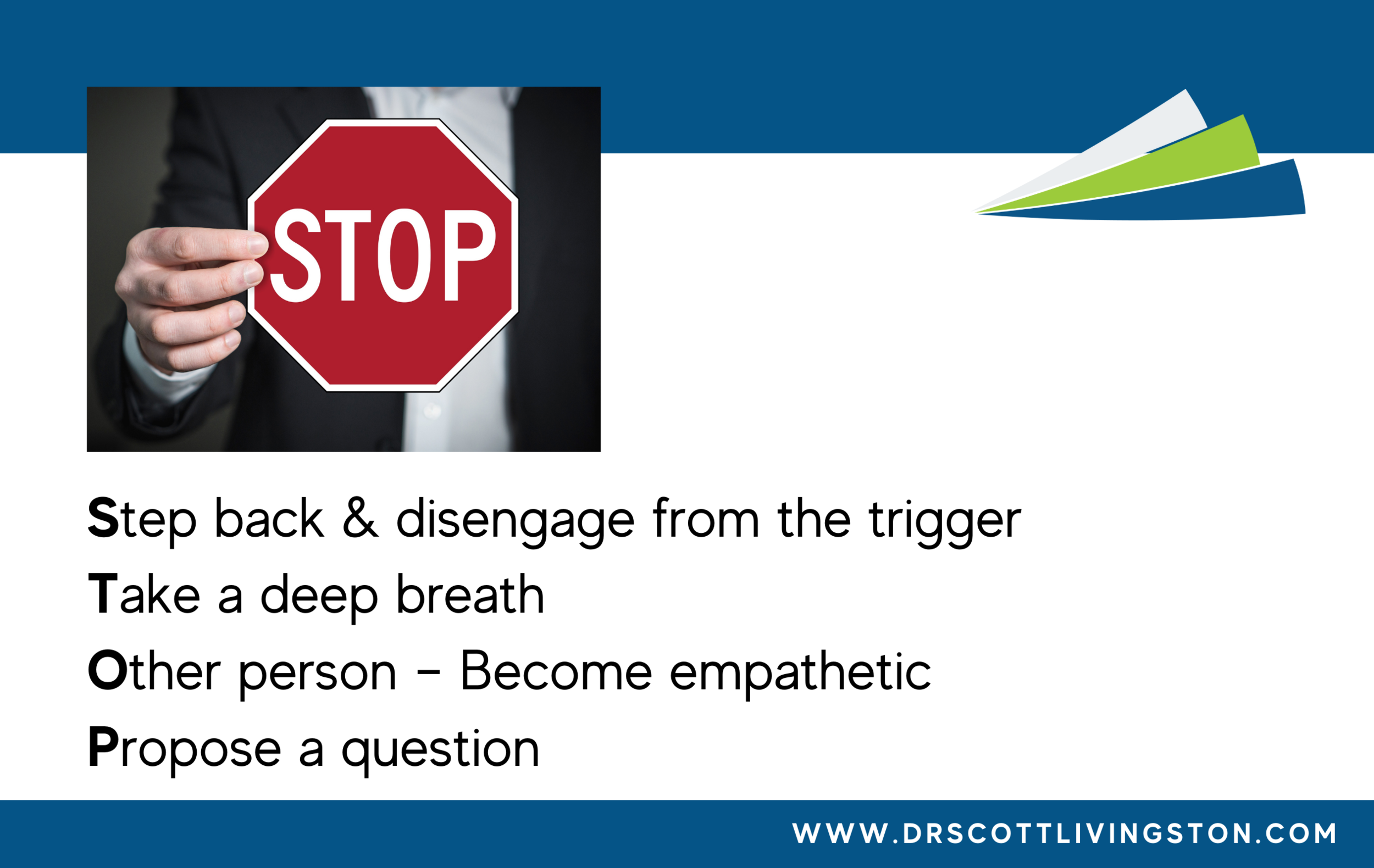CONFLICT.
It is not literally a “4 letter word,” but in organizations sometimes it feels twice as bad as any four-letter word ever would.
Conflict is one of those tense words that can have such a negative connotation. So averse that we avoid it like we would have during the heart of the COVID Pandemic if someone in the grocery store was not wearing a mask when it was required.
It is like the conversation you know you need to have with someone, but you go the other way because avoidance seems, at the time, to be much less painful than the interaction.
But is it? What is behind this avoidance?
This is the generation of “when you see something, say something.” I think that mantra is pretty easy to articulate in isolation, like when you are hiding behind your Facebook or Instagram page. But, putting all the social pressures we feel in organizations on top of it and avoiding conflict can seem like a better route than addressing it.
What if the person I am in conflict with gets hurt? Worse yet, what if I get hurt?
Rather than face the hurt or the pain, our knee-jerk response is often to avoid it. Just like the person in the grocery store who was not wearing a mask during the Pandemic, our first thought was not the fact that it is unlikely they have COVID, rather, we probably chose to avoid them altogether. There is over a 90% chance that all is well, but we become paralyzed by the prospect of the pain, so we avoid and miss all the great opportunities that could have been present if we just engaged.
Conflict and Emotional Intelligence
I was working with a team of folks a few years back whose senior leadership team was trying to address the fact that their business was being held back because everyone in the company was so nice to each other.
I actually see this a lot with the organizations I work with. They are great people. Highly professional. And rightly so, in our organizations, it has become the right thing to do to treat employees well, and with respect.
A goal in developing organizations is to try and understand what the people need and to try and meet those needs. We hear a lot these days about how to engage employees; making sure they are enjoying their work has become a metric for performance. That is all well and good, except if we are not careful we can over-index the relationships to the extent that problems will go unsolved.
It is interesting to me the relationship between “Interpersonal Relationships” and “Decision-Making”, specifically the problem-solving aspect of a decision-making process.
First, let me define my terms:
Interpersonal Relationships between people are mutually satisfying relationships that are characterized by trust and compassion.
Problem-Solving is the ability to find solutions for problems where emotions are involved (which is every problem) and how the emotions impact the decision.
Here is what it looked like for the client I mentioned above:
The organization had a culture of caring about people. The experience was very much like being in a family. By in large, they all are really nice people. They trust each other and show a tremendous amount of care and compassion. They have strong interpersonal relationships.
So when a deadline came…(and went)… for a project to be delivered, it created a problem. Other teams would be waiting for the work that was now missing. What ensued is what I called “tension smiles”. You can feel the tension of the missed deadline, all the while smiling as if nothing was wrong.
The emotion about the problem was high. The relationships were trusting.
The issue became that the folks in the organization saw the choice they had as either stressing the relationship OR solving the problem. What I heard was, “If I confront Sam for missing the deadline, then I will lose trust with him.”
From their perspective, the choice was between preserving the relationship OR the solving problem - not both.
This is common when it comes to conflict. The tension and the emotion affect our ability to see things clearly. We fall into fear-based thinking that blinds us. Instead of seeing the full picture, fear causes us to see very few options in front of us.
The Strategy
A simple hack when you feel you are facing this dichotomy is to change your “OR” to an “AND”.
How can the manager in the above scenario have both strong interpersonal relationships and solve the problem at hand?
Understanding where Sam is coming from AND holding him accountable for missing the deadline are both possible by flexing your empathy muscle; empathy for Sam as well as for the people impacted by his missing the deadline.
Our emotions will, at times, not tell us the truth.
It will feel like I must pick one option over the other; such as the relationship over solving the problem. This is the “false” in a false dichotomy.
Your emotion, your fear, and your anxiety are all telling you something, but what they are telling you gets misinterpreted.
Your emotion is telling you that there is tension. The question your emotion is asking you is “What do you want to do about this?”
Emotions can’t decide. All they can do is inform.
It is up to your more rational, thinking brain to make the decision. In order to do this, it is key when you feel the fear or the anxiety in the false dichotomy of the choice to take a deep breath. Step back for a moment and see if you can find a way to solve the problem AND maintain the relationship.
Change your “OR” to an “AND”.
Hold Sam accountable AND maintain the relationship.
























